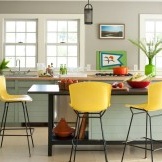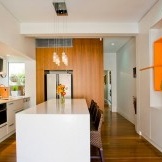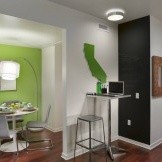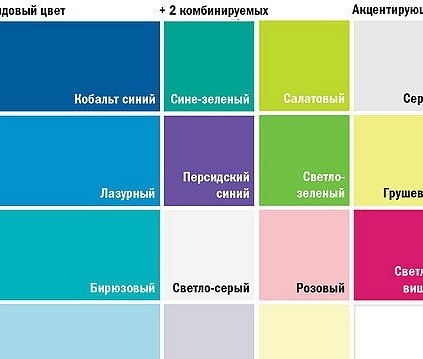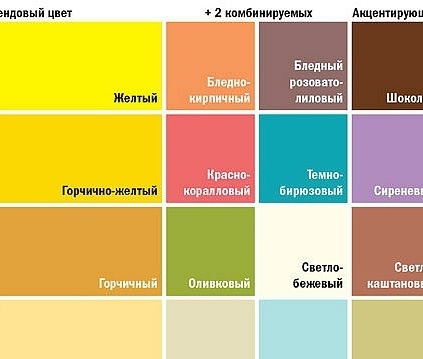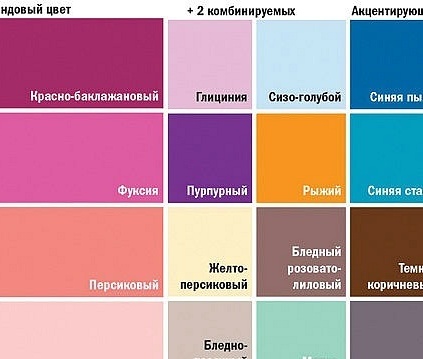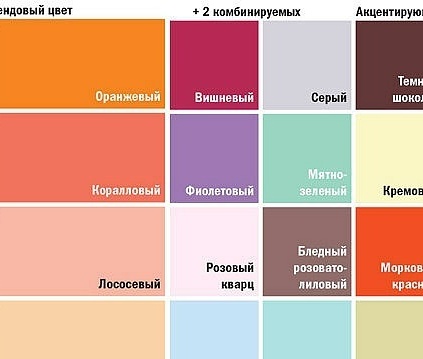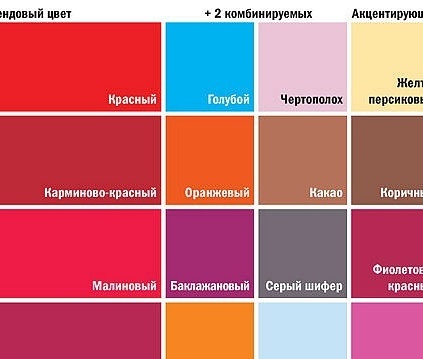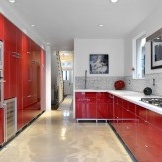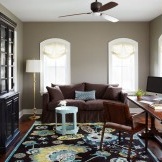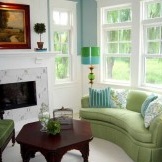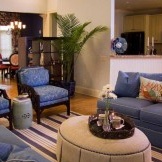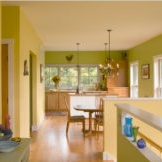Let's talk about color: the rules of combination and impact
Correctly selected color of the interior, of course, affects our emotional state, as well as psychological, and as a result, physical. “Learn to use colors for your own good,” psychologists say.
Scientists have proven that ...
The influence of color extends not only to mood, but also to the state of the body, even the change in the functioning of some vital systems. This has become widely used in medical practice. Naturally, it is important to correctly select the color scheme for the rooms in your house or apartment. Of course, first of all, you need to be guided by your tastes, but you should pay due attention to the tips and patterns that have been identified by scientists. There are rules for harmony in the combination of colors, preference for shades for each room. All this will help create coziness and harmony in the home.
Tips & Tricks
All colors are usually divided into warm, cold and neutral, but with different presentation, the same tones can create both a warm atmosphere and a cold one. The only two colors that do not change their rules are always warm orange and forever cool blue. The orange interior is associated with a sunny mood. And blue - with ice. Varying colors and their shades, you can transform and even modify the room.
First of all, it is necessary to clearly distribute the purpose of the rooms and, based on this, choose a color motive. For example, it is believed that for baby rooms calm and soft tones are better suited. By choosing a yellow color, you can adjust the attention of the baby, increase creativity. And if you choose red, then such an interior will contribute to vigorous activity and mobility, but it will prevent you from quickly and calmly falling asleep.
In a relationship the kitchen everything is clear - this is the place where food is prepared and taken, and on this basis, it is often advised to use colors that contribute to a good mood and appetite. These include: green, orange, beige, yellow. Of course, it is important to apply combinations with other shades, for example, with light blue, if desired with red and so on. The main thing is that you feel comfortable. And do not forget that juicy shades reduce appetite and even impair digestion. But this, of course, is not an axiom, because everyone has their own perception of color.
Living room It is intended for spending time with guests and family members, so you should be careful when choosing a color, because not everyone will be comfortable, for example, in a dark or too bright interior. Therefore, for this room it is advisable to choose something neutral, not causing irritation. It can be any color, presented in a light or soft form. If desired, you can add bright details in the form of accents.
Bedroom - this is the room with which you can do almost anything, this is the personal space of the owner and here you need to reckon only with your preferences. It can be, though black or bright red, who cares! But, do not forget that the bedroom is a place of rest and in such an interior it will be difficult to sleep and even just relax. Therefore, bed tones are most often preferred, by the way, purple does not apply to those, but it is also good for a bedroom. Here should reign calm and softness.
For bathroom most often characterized by white color, possibly with the addition of pale blue, personifying purity.
The purpose of the room is not all that affects the choice of color. The second point to consider is the size of the room. To make a large room cozy and bright, use warm shades, which also create a good mood.
To visually enlarge a small room, select a cool palette in bright colors. By the way, light colors always increase space.
As for the cozy and comfortable atmosphere, it is important to use the right combination of colors and the contrast method. What the background will be - bright or calm - depends on the preferences of the owner of the rooms, but in order not to turn it into a motley ensemble or a boring museum, take one main color that will be the leading one and set the tone for the whole atmosphere. And then pick up several shades of a different key to it. That is, taking red, complement it with soft orange, pale yellow, you can even beige and so on. There are no special rules regarding decor, accessories can have a variety of colors and shades, most importantly, do not overdo it and do not fill the room with all the colors of the rainbow.
There is another option for interior design - a game of contrasts. Each primary color has its own antipodes, making the right combination, you can achieve a good atmosphere in the room. For example, red is opposed to green, purple to lime, yellow to lilac, white to black, pink to light green.
And there are colors that get along poorly with each other. A combination of warm dark and cold light shades should be avoided. And vice versa - warm light and cold dark shades. For example, burgundy (warm dark) and blue (cold light); yellow (warm light) and blue (cold dark). It is proved that such a combination negatively affects the psychological state of people. Although we live in a time when they pay little attention to it and it is customary to combine the incompatible.
Below are the tables that will help you understand all this variety of color combinations.




